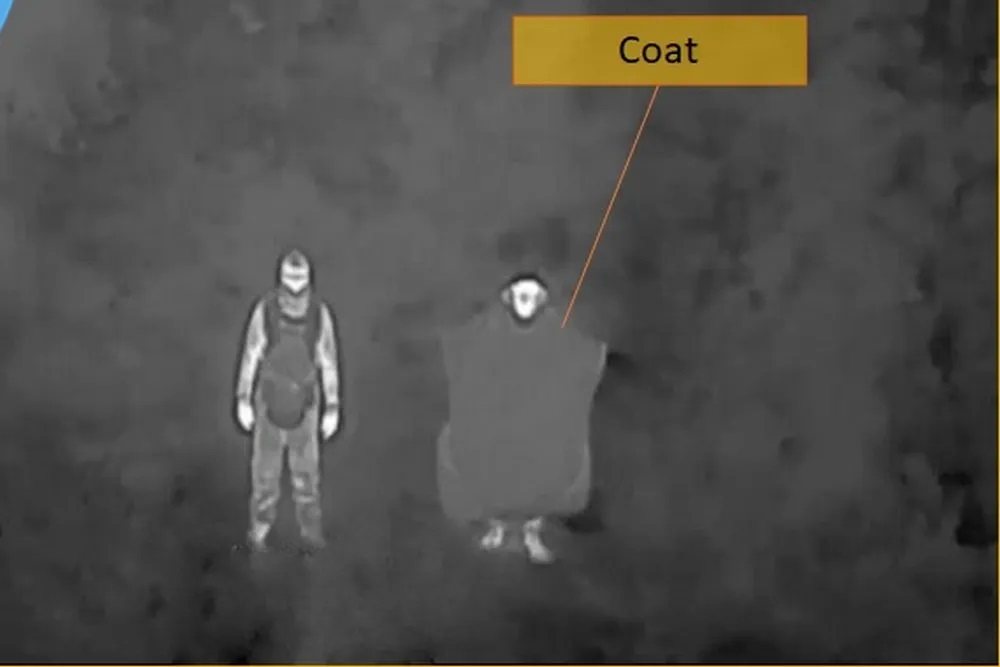Russian troops beware: use thermal camo correctly, or get droned

The Russian military knows it has a nighttime camouflage problem. It’s begun circulating a field manual instructing befuddled troops on the proper fit for their thermal blankets.
The main point, according to the manual, is to make sure the blanket isn’t warmer than the nighttime landscape. “Before putting on the anti-heat-vision cape, it should be taken outside in advance and cooled by hanging it in the shade for at least one hour,” the manual advises, according to a translation posted online by Canadian drone expert “Roy.” “It is necessary in order for the cape to reach ambient temperature.”
By the same token, soldiers should make sure their thermal camo isn’t cooler than the landscape. That advice is a matter of life and death.
Consider what happened to a trio of Russian troops that tried to sneak across open terrain toward the front line presumably somewhere around Novomykolaivka in eastern Ukraine’s Donetsk Oblast in late June.
The Russians did the smart thing and moved at night, under thermal camouflage that should—in theory—hide them from surveillance drones with infrared sensors. But the Russians hid under thermal blankets that were cooler than the surrounding summertime terrain was.
“Pretend to be a bush.”
— Roy
The Russians have published a manual on the use of thermal capes.
1/ https://t.co/ztKApfk2Zi pic.twitter.com/2sSZi0RJz8(@GrandpaRoy2) July 8, 2025
Instead of disappearing from Ukrainian drones’ heat sensors, they stood out. A bomber drone from the Ukrainian army’s 59th Assault Brigade spotted them—and approached with a clutch of grenades.
The Russians knew they were in trouble. They apparently heard the drone coming, crouched in place and pulled their blankets tightly over them. But it didn’t help.
It wasn’t some exposed limb sticking out from under a blanket that gave them away—it was the blankets themselves. The temperature differential between the ground and the outside of the blankets was so great that that blankets appeared as black shapes amid the gray and white landscape on the bomber drones’ infrared sensor.
The drone operator took their time aiming their grenades. The first round hit within meters of the crouching Russians. Arterial blood spray from one badly wounded Russian glowed hot on the drone’s camera. The ammunition the Russians were carrying, which cooked off following the second grenade impact, glowed even hotter.
The blasts left the landscape painted with blood, body parts and hot fragments.
Russian soldiers in heat-insulating anti-drone ponchos tried to approach and attack frontline positions. By the 59th Brigade of the @usf_army. pic.twitter.com/DgTfG8ImnS
— Special Kherson Cat(@bayraktar_1love) June 24, 2025
How not to hide
Drones are everywhere all the time as Russia’s wider war on Ukraine grinds into its 41st month. Even on a quieter stretch of the 1,100-km front line such as that held by the 59th Assault Brigade. Even at night.
Both sides urge their troops to conceal themselves from the ever-present drones. “Use thermal blankets, similar to those that are often placed in … first-aid kits,” the Ukrainian government advised its forces in its own counterdrone field manual. “If possible, take care and use mylar capes, blankets, cloth. They effectively reflect infrared radiation.”
But the thermal camo can work poorly—or too well. Cheaper mylar blankets tend to trap too much heat or too little. When the ground is warmer than the outside of the blanket is, the wearer will appear as a solid dark square on any infrared sensor. When the ground is cooler, the wearer will appear as a solid white square.
A thermal blanket must be the same temperature as its surroundings. Placing the blanket outdoors in the shade in order to cool it is one necessary step, according to the Russian manual. A proper fit—loose but totally covering the wearer—is another necessity. “Do not allow the cape to be pressed against your body,” the manual warns. “It will warm up the cape quickly in places of pressing and begin to ‘glow’ in the thermal imager.”
Given the many instances of Russian troops getting spotted and droned while wearing badly fitting, too-hot or too-cold thermal camo, the Kremlin surely hopes its surviving forces heed the manual. Ukrainian drone teams, hunting by night with infrared sensors, surely hope the Russians don’t heed it.

